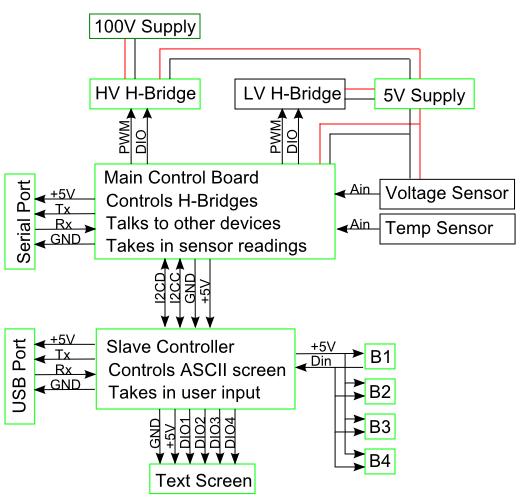Team:Baltimore US/Project
From 2010.igem.org
m (→Developing low-cost alternatives to existing enzymes: Taq polymerase Project Details: copyediting) |
m (→Developing low-cost alternatives to existing enzymes: Taq polymerase Project Details: copyedit) |
||
| Line 24: | Line 24: | ||
==Developing low-cost alternatives to existing enzymes: ''Taq'' polymerase Project Details== | ==Developing low-cost alternatives to existing enzymes: ''Taq'' polymerase Project Details== | ||
| + | We wished to insert Taq Polymerase into a standard BioBrick vector. If this part should prove useful to other teams as an element of a rational design, we must ensure that no sites for the standard BioBrick restriction enzymes exist within the part itself, otherwise the part would shear upon assembly. | ||
| - | |||
| - | |||
| - | |||
| - | |||
| - | |||
| - | |||
| - | |||
| - | |||
| - | ====Problem: PstI restriction site | + | We examined the Taq [http://www.ncbi.nlm.nih.gov/nuccore/155128 sequence]and exported the SEQ into Plasma DNA. [http://research.med.helsinki.fi/plasmadna/ Plasma DNA] is free software from University of Helsinki which provides quick analysis of plasmid sequence information. In particular, we obtained a restriction map which identified potential EcoRI, Xbe1, Sbe1, or Pst1 sites within the coding sequence. Here we encountered our first difficulty. |
| + | |||
| + | ====Problem: a PstI restriction site within the coding sequence==== | ||
| + | At 1717nt, we discovered a restriction site for Pst1: | ||
CTGCAG-PstI restriction site<br> | CTGCAG-PstI restriction site<br> | ||
GACGTC-Complement<br> | GACGTC-Complement<br> | ||
Revision as of 02:58, 28 October 2010
| Home | Team | Official Team Profile | Project | Submitted Parts | Modeling | Notebook | Meeting/Lab Times | Safety |
|---|
|
DIY-GEM: a path towards low cost high throughput gene synthesis.Synthetic biology research requires more cost effective approaches toward reagents and hardware accessibility. We are developing low-cost alternatives to existing hardware and enzymes in an attempt to expand participation in biological research and development. Our project expands the accessibility of Taq Polymerase by engineering it in a form compatible with BioBrick assembly. This allows use of the over-expressed enzyme from a crude bacterial extract in a PCR reaction at a fraction of the cost of highly purified commercial enzyme. In addition, we have developed inexpensive and easily assembled lab equipment such as a gel electrophoresis apparatus and a PCR thermal cycler. Enabling researchers to synthesize their own enzymes and having access to inexpensive tools will allow for increased participation among the DIY-bio community, stretch increasingly scarce educational funds, and allow rapid scale up of large scale gene synthesis projects." Developing low-cost alternatives to existing enzymes: Taq polymerase Project DetailsWe wished to insert Taq Polymerase into a standard BioBrick vector. If this part should prove useful to other teams as an element of a rational design, we must ensure that no sites for the standard BioBrick restriction enzymes exist within the part itself, otherwise the part would shear upon assembly.
Problem: a PstI restriction site within the coding sequenceAt 1717nt, we discovered a restriction site for Pst1:
CTGCAG-PstI restriction site Primer DesignWe designed a primer pair in order to induce point-mutagenesis at the Pst1 restriction site, flanking the base pair to be altered by 14 nt. with changed Amino Acid Bp's Targeting initial Leucine at G of CTG to CTT. Point mutation Original G in CTG of Leucine. Change of one base to CTT maintains Leucine integrity. GTGGAGAAGATCCT(T)CAGTACCGGCGG While we're designing primers, besides the point mutation, we'll take the opportunity to design and order the primers for the Bb Suffix and Prefix. We'll follow the examples laid out in the Registry of Standard Parts under Promoter Construction for designing the oligos needed to make a part. (http://partsregistry.org/Help:Promoters/Construction) PolI Coli Primers For Overlap Extension PCRPCR Reaction 1
Developing low-cost alternatives to existing hardware: Project Details and ResultsAn unfortunate fact of reality is that precision lab equipment is very costly. Even simple devices such as an Electrophoresis or PCR have significant cost. To ameliorate this a portion of our project will involve designing biological tools that are easy to build and are economical.
|
 "
"


